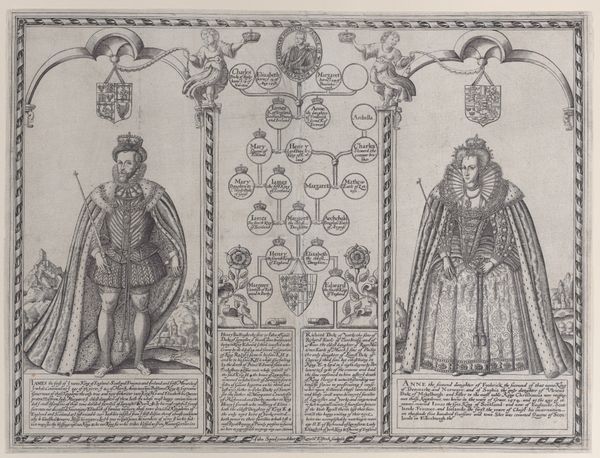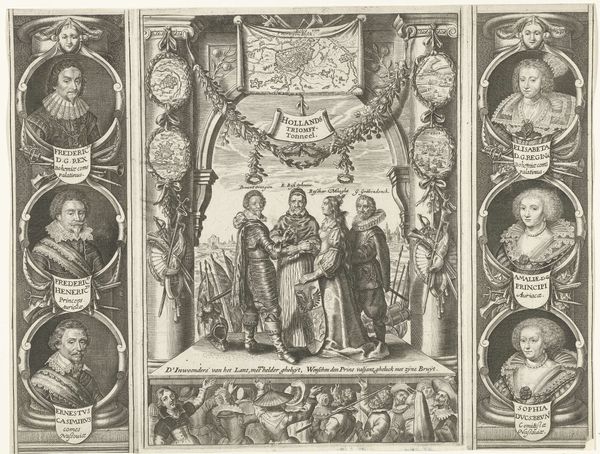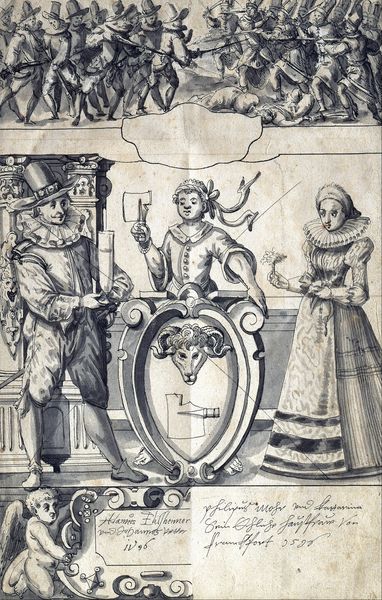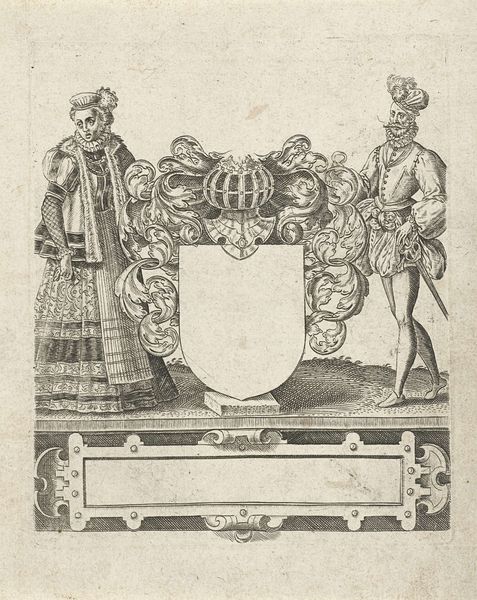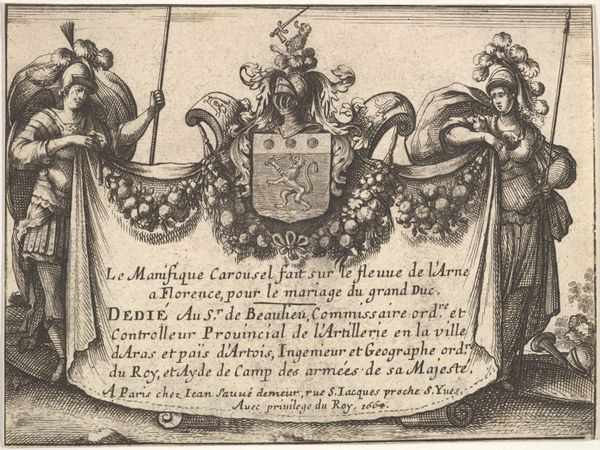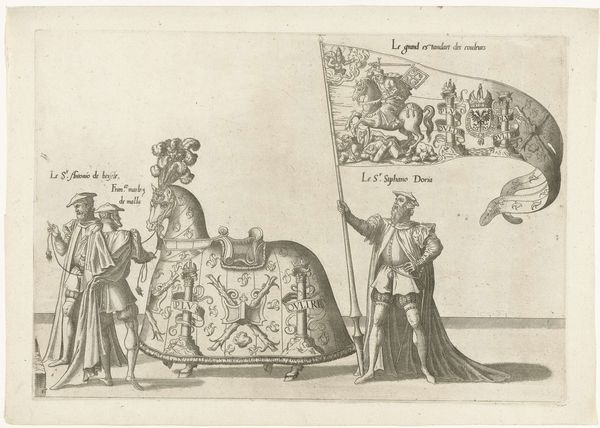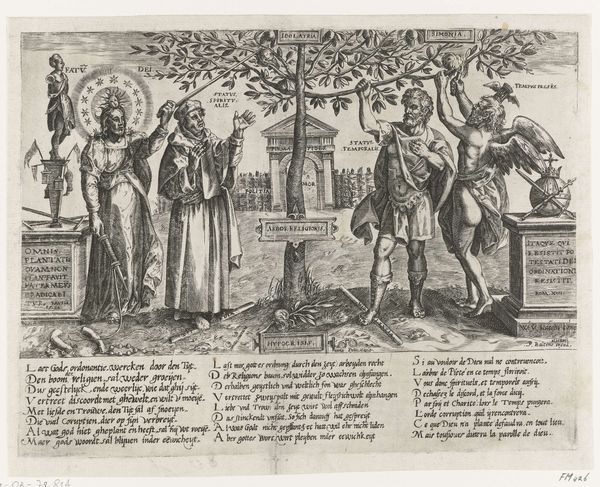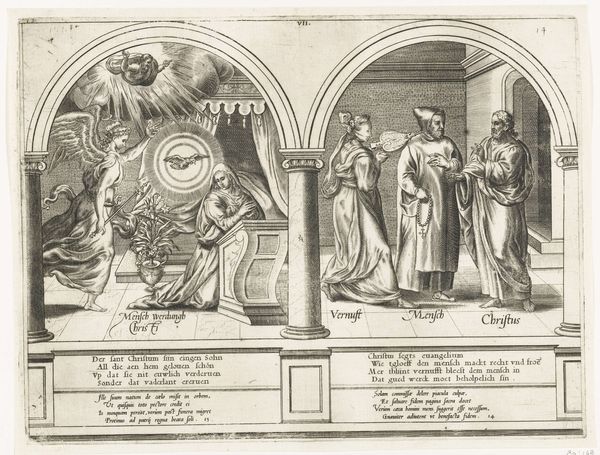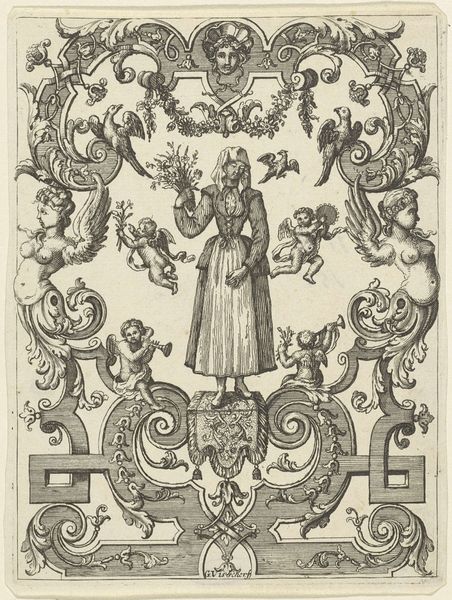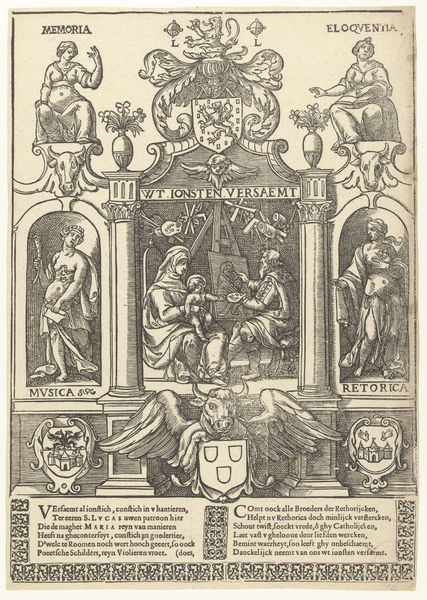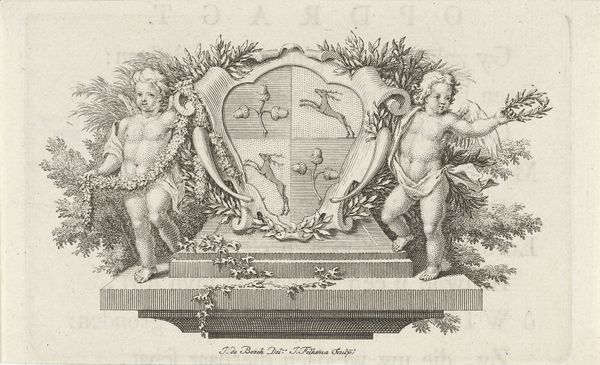
Portretten van Jacobus I, koning van Engeland en zijn gemalin Anna van Denemarken staand aan weerszijden van stamboom 1593
0:00
0:00
engraving
#
portrait
#
pen illustration
#
pen sketch
#
figuration
#
ink line art
#
11_renaissance
#
line
#
pen work
#
history-painting
#
northern-renaissance
#
engraving
Dimensions: height 231 mm, width 358 mm
Copyright: Rijks Museum: Open Domain
Curator: Welcome! We’re standing before a fascinating engraving by Nicolaes de Bruyn, created in 1593. It's titled "Portraits of James I, King of England, and his Wife, Anne of Denmark, Standing on Either Side of a Family Tree". You can find it here at the Rijksmuseum. Editor: It’s striking, isn’t it? Quite… diagrammatic. At first glance, it almost feels like peering into some meticulously documented dream about power and lineage, rendered entirely in sepia tones. It's like a royal family tree got tangled up with architectural blueprints. Curator: Indeed. Structurally, the bilateral symmetry is quite pronounced. We observe James I and Anne of Denmark flanking a genealogical tree, all rendered with intricate linework, characteristic of engravings from this period. The heraldic elements also reinforce notions of power and dynasty. Editor: All those tiny, precise lines! And those stiff poses. It almost feels deliberately flattened, less concerned with portraying the warmth of flesh and blood, and more focused on projecting the… icy weight of dynastic expectation. Do you feel that lack of air around the figures? Curator: One could argue that the lack of spatial depth emphasizes symbolic over representational accuracy. Consider how each figure is presented: their clothing, posture, and attendant symbolism serve to broadcast very specific information about their status. Editor: Sure, I see that. It is all about messaging. But what a message! Look at poor Anne, permanently encased in that enormous gown and ruff. There is such… loneliness emanating from her regal isolation. Curator: Isolation can be seen in semiotic terms through examining spatial relationship. Her separation is integral in reinforcing a central concept: lineage. Consider that the genealogical chart physically separates her and King James, it symbolizes family line, their union, and the continuation of the royal succession. Editor: Hmm. Succession and sartorial oppression... I guess in those days, one came bundled with the other, eh? Anyway, seeing this… rigid record, it just makes me think about how those historical players actually felt about all that dynastic pomp and circumstance. It makes me want to tear up this engraving and set everyone free of expectations. Curator: The composition of this engraving really prompts a multifaceted reflection on lineage, power, and visual communication in the late 16th century. Editor: Exactly. Art like this—serious, starched, and symbolic—somehow still lets us glimpse the long-lost humanity, squashed but still breathing beneath all that royalty.
Comments
No comments
Be the first to comment and join the conversation on the ultimate creative platform.
